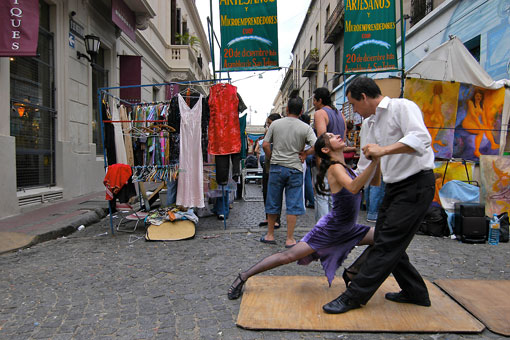Most Latin American countries have regarded immigration policy as a function of border protection, using approaches that emphasize security and law enforcement, including strict regulation of work and residency permits. Nevertheless, such policies have not only failed in recent years to curb the growth of undocumented migrants; they have also clashed with resolutions adopted in 2003 and 2008 by the Inter-American Court of Human Rights that guarantee migrant rights.
Argentina is a notable exception. Thanks to a law passed in 2004, it has emerged as a model for innovative immigration policymaking. The law incorporated the recognition of migration as a human right. But what really made it historic was the open, consultative process used to conceive, develop and pass the legislation.
How Argentina got there is an instructive story—and it may hold lessons for its neighbors and for other areas of the world.
A Country of Immigrants Struggles with Its Limits
As a country known both as a source and a destination for immigrants, Argentina has always carved out a special place for itself in Latin America. In the nineteenth century, it forged a national identity through an open-door immigration policy that was geared selectively toward European immigrants. But migration from neighboring countries such as Bolivia, Chile and Paraguay increased steadily to the point that—by the 1960s—the number of immigrants from its neighbors outpaced arrivals from Europe.
In response, Argentina imposed stricter controls on the entry and exit of foreigners, beginning with legislation introduced in 1966. The legislation established new measures for deporting undocumented immigrants.
In 1981, under the military dictatorship, legislative decrees that allowed the state to expel migrants were codified into law for the first time as Law 22.439, also known as La Ley Videla (named after the military dictator Jorge Rafael Videla, who was later convicted of human rights violations). The law contained several provisions that affected constitutional guarantees, including the right of authorities to detain and expel foreigners without judicial redress; the obligation of public officials to report the presence of unauthorized immigrants; and restrictions on their health care and education. For example, undocumented immigrants could receive emergency health care, but hospitals were then obligated to report them. The resolutions and decrees of the National Migration Office—first established in 1949—turned the office into a vehicle for the violation of migrant rights and precluded it from regulating immigration and addressing immigrants’ status.
From the downfall of the military dictatorship in 1983 until 2003, congress failed to repeal La Ley Videla or enact an immigration law in accordance with the constitution and international human rights treaties recognizing migrant rights. In fact, the executive branch expanded the law’s discriminatory features and promoted the autonomy of the National Migration Office to establish criteria for admission and expulsion from the country without any legal oversight.
The continuation of La Ley Videla relegated close to 800,000 immigrants—most of whom came from neighboring countries—to “irregular” status, with serious sociopolitical consequences.
Efforts to rectify the situation at first met little success. In the absence of reform, Argentine immigration policy was based on individual agreements with countries like Bolivia and Peru to regulate immigrant flows. These agreements failed to address the larger realities of immigrant flows and Argentine authorities often expelled immigrants despite the treaties. As a result, courts repeatedly upheld detentions and expulsions sanctioned by the immigration authorities, with no formal mechanisms to ensure justice for immigrants. In turn, the high cost of filing or pursuing an appeal generally made this an unlikely option.
In 1996, this unjust and unsustainable situation led to the creation of the Roundtable of Civil Society Organizations for the Defense of Migrant Rights, a diverse coalition of human rights groups. The roundtable sought to counter xenophobic rhetoric from state ministries and from the president. It worked for migrant rights and included a diverse coalition of immigrant associations, religious groups, unions, and academic institutions. A key goal was to expose the contradictions and inconsistencies of La Ley Videla by sponsoring reports on human rights abuses of migrants, bringing cases to court and submitting complaints to the Inter-American Human Rights System.
In 2000, the organization outlined a specific agenda to repeal La Ley Videla and to pass a new immigration law that respected the rights of foreigners. Criteria for the new legislation included: administrative and judicial control over the National Migration Office; reform of deportation and detention procedures to guarantee due process; recognition of the rights of migrants and their families to normalize their immigration status; and elimination of discrimination and other forms of restrictive control in order to ensure access to constitutionally guaranteed social rights and services…





